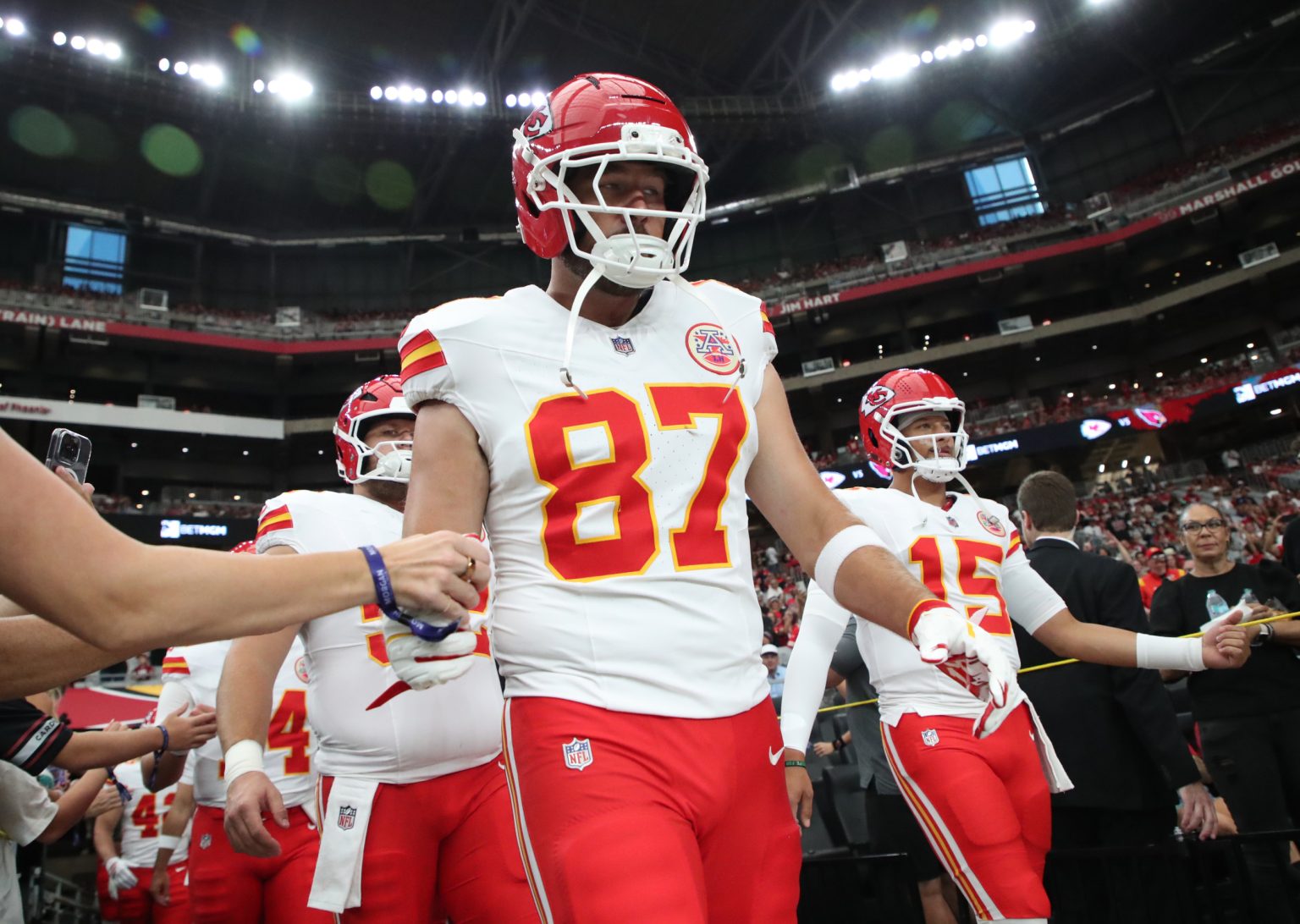Travis Kelce’s Unexpected Confrontation on the Field
In an unusual turn of events during the Kansas City Chiefs’ Week 1 matchup against the Los Angeles Chargers in San Paulo, Brazil, star tight end Travis Kelce found himself on the receiving end of a surprising physical altercation. Midway through the third quarter, while blocking Chargers defensive lineman Teair Tart on a play that resulted in an 11-yard gain by Patrick Mahomes, Kelce experienced something beyond the typical physical contact of football. After the play concluded with Kelce giving Tart a subtle shove, Tart responded by forcefully slapping Kelce across the facemask—an action rarely seen on professional football fields. While Kelce is accustomed to absorbing hard hits from linebackers and safeties across the middle of the field, this open-handed strike to the face represented an unexpected escalation of on-field aggression.
The incident immediately raised questions about the appropriate disciplinary response. Officials assessed Tart a 15-yard unsportsmanlike conduct penalty, but to the surprise of many viewers and social media commentators, he was not ejected from the game. This decision puzzled fans who believed such an overtly aggressive act warranted removal from the contest. The apparent discrepancy between the visual severity of the action and the relatively mild punishment prompted discussion about consistency in NFL rule enforcement and player protection standards. The moment highlighted the thin line between the inherent physicality of football and actions that cross into unsportsmanlike territory, especially when directed at one of the league’s most recognizable stars.
NBC Sports and Amazon Prime NFL rules expert Terry McAulay, a former official himself, stepped in to clarify the situation for confused viewers. According to McAulay, the decision ultimately came down from NFL executive leadership, including either Executive Vice President of Football Operations Troy Vincent or the Senior Vice President of Officiating. As explained through Walt Anderson, the determination hinged on the specific nature of the contact—because Tart had used an open hand rather than a closed fist, the action was deemed not to meet the threshold for disqualification. This technical distinction between different forms of physical contact reflects the nuanced nature of NFL rules regarding player conduct and the factors officials must consider when determining appropriate penalties.
The NFL rulebook grants the league office authority to instruct game officials on player disqualification if they determine a foul “for a football or non-football act called on the field is flagrant.” This centralized review process allows for consistency across games but also introduces an element of subjective judgment about what constitutes flagrant behavior. In Tart’s case, the open-handed nature of the slap apparently differentiated it from a punch, which would have likely resulted in immediate ejection. McAulay explained that both the amount of force applied and whether the hand is open or closed can influence these decisions, though many observers might question whether such technical distinctions adequately address player safety and sportsmanship concerns when a player deliberately strikes an opponent in the head area.
For Kelce, this incident represents yet another unique challenge in a career that has seen him navigate both on-field obstacles and increasing off-field attention. As one of the NFL’s premier tight ends and a key component of the Chiefs’ offensive success, Kelce regularly faces physical defensive strategies designed to limit his effectiveness. However, Tart’s slap went beyond strategic physicality into personal confrontation. To Kelce’s credit, he appeared to maintain his composure following the incident, focusing on the game rather than escalating the situation—a professional response that likely helped prevent further unsportsmanlike actions from either team as the high-stakes contest continued.
The Kelce-Tart confrontation occurs against the backdrop of the NFL’s ongoing efforts to balance the inherently physical nature of football with increased emphasis on player safety and sportsmanship. In recent years, the league has implemented various rule changes and enforcement priorities aimed at reducing dangerous plays, particularly those involving contact to the head and neck area. This incident demonstrates the challenges in consistently applying those standards across different game situations and types of contact. While the officials and league office determined that Tart’s actions warranted a significant penalty but not ejection, the public reaction suggests that many fans and observers have different expectations about how such confrontations should be handled, particularly when they appear deliberately provocative rather than incidental to gameplay.
As the Chiefs and Chargers continued their season-opening contest, this momentary flare-up served as a reminder of the intense competitive environment of NFL games and the fine line players walk between aggressive play and unsportsmanlike conduct. For Kelce, it was an unusual chapter in a career that has already included three Super Bowl victories and numerous Pro Bowl selections. For Tart and the Chargers, the penalty represented a costly loss of field position in a competitive divisional matchup. And for the NFL as a whole, the incident and its aftermath provide another data point in the ongoing conversation about how best to maintain the physical essence of football while ensuring appropriate standards of sportsmanship and player protection are upheld on every field, whether in Kansas City, Los Angeles, or as far afield as Brazil.


